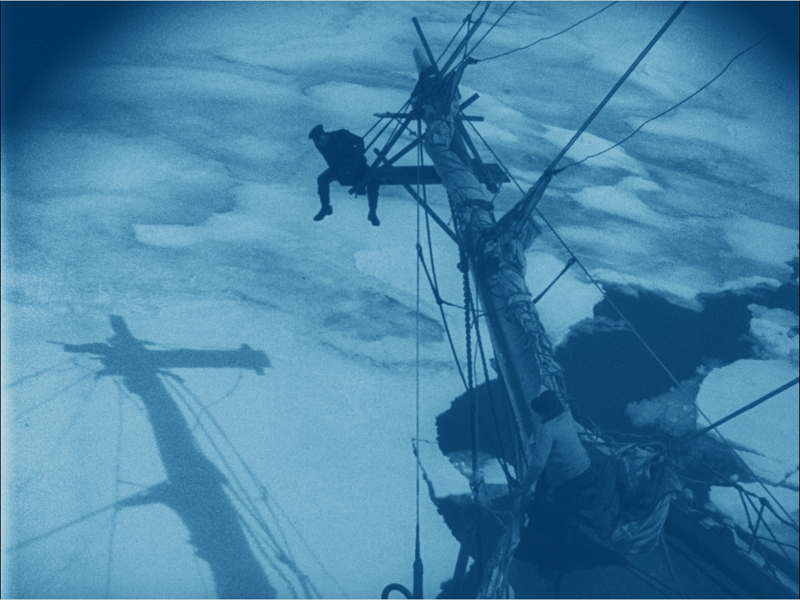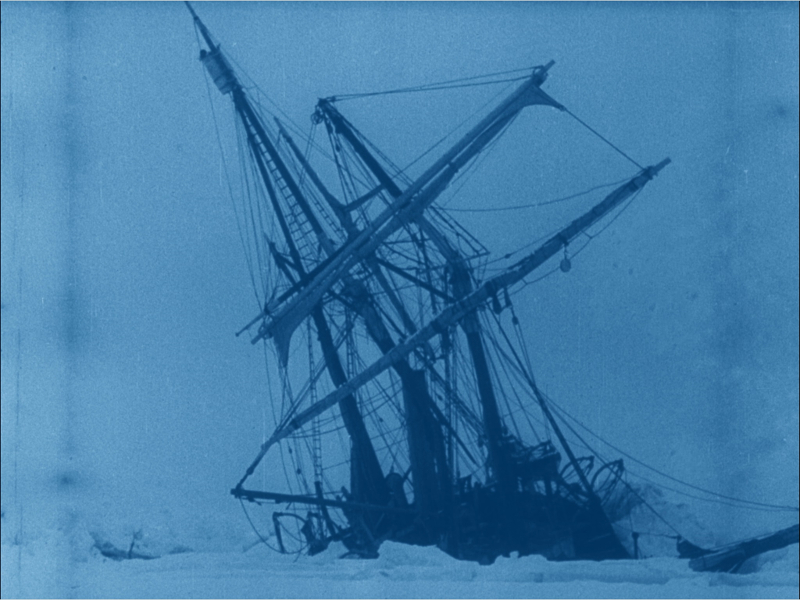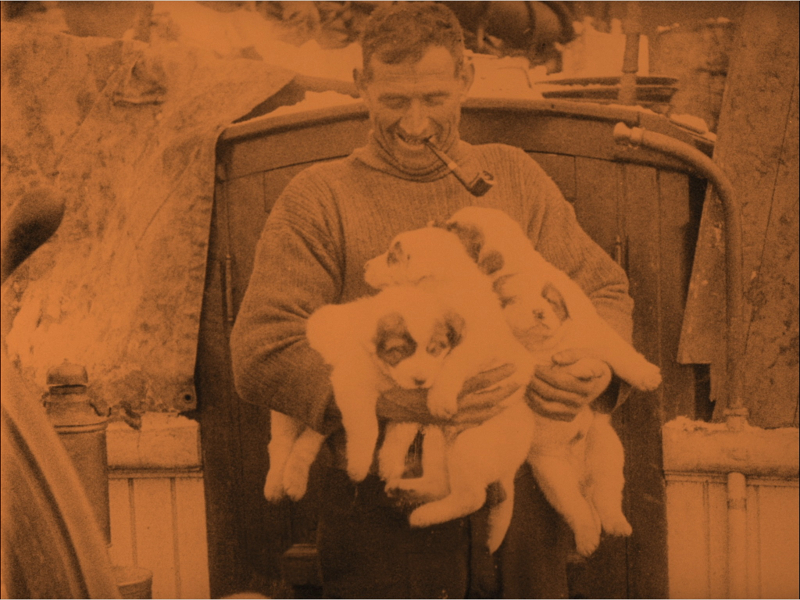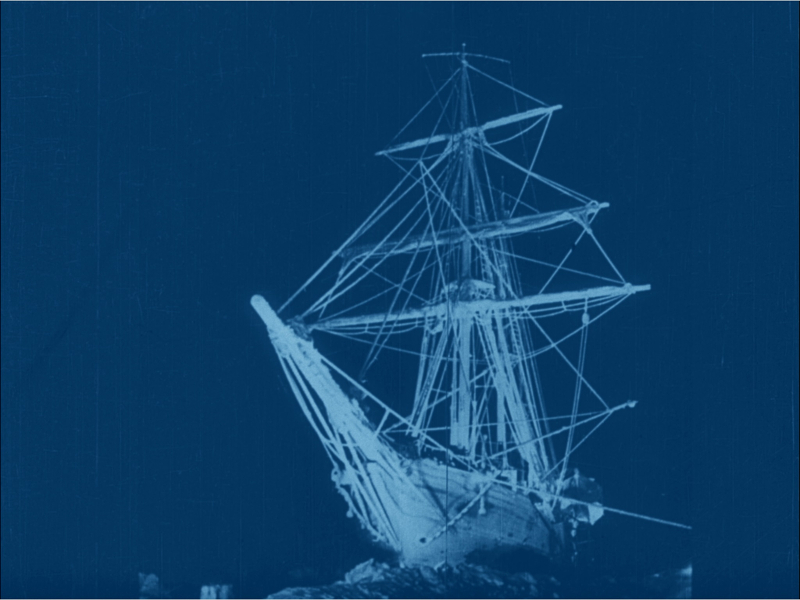Director – Frank Hurley – 1919, Restoration 2022 – UK – Cert. U – 81m
*****
One of the earliest documentaries ever made charts British explorer Sir Ernest Shackleton’s disastrous expedition to the South Pole – out in cinemas on Friday, January 28th
Made over one hundred years ago, and one of the first feature documentaries, this record of Sir Ernest Shackleton’s ill-fated 1914 expedition to the South Pole on his ship The Endeavour proves fascinating on a number of levels. It comes from a time when the cinema was in its infancy: film stock was monochrome, sound film was still a decade away. A time when large parts of the world remained unexplored, when the new cinema audiences could be attracted by real life tales of faraway, unknown lands. A time when Britain still considered itself one of the great world powers, largely on account of its Empire and maritime achievements.
Taking a camera on an expedition to the South Pole perfectly fits these last two ideas. And because shooting film was at this point in history unencumbered by the additional equipment required to record sound, it could be as simple as one person such as Frank Hurley joining an expedition as a photographer or cinematographer. He did so largely on the strength of his earlier, shorter documentary feature Home Of The Blizzard (1913).

Passing huge icebergs, the Endeavour makes its way though the Antarctic ice, breaking the floes up with its prow as it moves forward. Once it can get no further, it gets frozen in for several months. Then the hull is punctured by the advancing blocks of ice (which suspend it above the surface and prevent it from sinking, according to the intertitles) until finally the force of ice crushes it, causing the hulk of the vessel to sink into the depths, leaving only the deck and collapsed masts visible above.

Before the hold is punctured, the crew disembark not only themselves but also their dogs, equipment and supplies. Finding an ice floe large and stable enough to make a viable camp location proves a challenge.
As the situation worsens, Hurley switches his image-making from moving to still images. These serve to convey deteriorating events effectively. When Shackleton sets off in one of the small boats to travel 800 miles to South Georgia Island for help, Hurley is among those left behind on Elephant Island. After the successful rescue of all the expedition members, Hurley journeyed back to South Georgia Island to film some of the wildlife to fill out the film.
The first thing one notices is the colour. Monochrome film could be tinted to various colours, a device used here to great effect. Title cards are in blue, other monochrome footage is in black and white, blue, green or ochre. As various crew members are introduced at the start, they are seen in ochre footage which gives them a peculiar warmth. Dogs in their kennels on board ship are black and white. Some natural history footage of sea elephants later on is in green while Emperor Penguin footage is blue. Much of what you might call the ‘exploratory’ footage, such as the ship’s prow breaking up the with its prow, is in blue. Colour film stock didn’t appear ‘til much later, but colour tinting of monochrome had the capability, as shown here, of raising a film above mere black and white.

Then – and this sounds strange when talking about a silent film – there’s the sound. Clearly this 2022 restoration has been carried out by people used to watching contemporary film and television with all its attendant technology, yet when we watch silent films today, we expect images, intertitles and incidental music. What we don’t expect is sync sound, although that is effectively a tool at the disposal of modern practitioners of film restoration. While there’s not much sync sound in South, there is a striking shot early on of Captain Hussey playing his banjo, with synchronised banjo playing on the soundtrack to match. Seen in the context of a silent film, where such things supposedly shouldn’t happen, this scene is quite breathtaking even today. It was probably much more so at the time.

The BFI’s new restoration includes a new orchestral score composed by Neil Brand, who manges to convey the sense of epic adventure alongside something more whimsical in the far lighter wildlife scenes. There remains something quite magical about someone taking a camera along to shoot a record of an expedition at a time when the cinema medium was in its infancy and the word ‘documentary’ was not in use the way it is today.
South plays BFI Southbank and selected cinemas from Friday, January 28th and is out on Blu-ray/DVD on South And The Heroic Age Of Antarctic Exploration On Film, released by the BFI on Monday, February 28th.
Clip:
